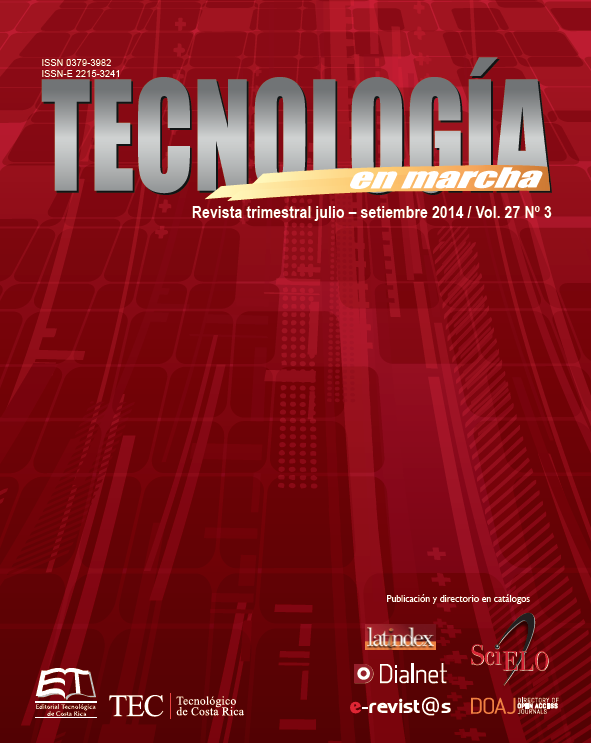Considerations of mechanical and thermal properties for the production of an irrigation pipeline from post-consumer polymer materials
Main Article Content
Abstract
It aims to show the results to develop three new formulations of polymeric materials from household waste generated, in order to determine the best material to make irrigation pipeline in Costa Rica, using commercial pipeline reference. Polymeric material was recovered polyethylene and polypropylene post-consumer, with the help of ITCR waste recovery programs. The material required for processes such as cleaning, sorting, grinding and extrusion. The samples were prepared with different proportions of the polymers used. The first specimen was LDPE; another mix was 75 % of LDPE and 25 % HDPE and a final mixture of 75 % of HDPE and 25 % of PP. These samples were analyzed for mechanical and thermal properties.
As a main result we found that the improved formulation of the pipeline properties studied was the mixture of different post-consumer LDPE products, for a total of ten repetitions with 95 % confidence in the Kolmogorov- Smirnov test, concluding that this product exceeds elongation resistance properties in bending and optimization needed characteristics for IZOD impact strength mode. Testing differential scanning calorimetry showed no external agents in samples, and thermogravimetric analysis showed the decomposition temperature change similar to the duct and higher than the other blends.
Article Details
Los autores conservan los derechos de autor y ceden a la revista el derecho de la primera publicación y pueda editarlo, reproducirlo, distribuirlo, exhibirlo y comunicarlo en el país y en el extranjero mediante medios impresos y electrónicos. Asimismo, asumen el compromiso sobre cualquier litigio o reclamación relacionada con derechos de propiedad intelectual, exonerando de responsabilidad a la Editorial Tecnológica de Costa Rica. Además, se establece que los autores pueden realizar otros acuerdos contractuales independientes y adicionales para la distribución no exclusiva de la versión del artículo publicado en esta revista (p. ej., incluirlo en un repositorio institucional o publicarlo en un libro) siempre que indiquen claramente que el trabajo se publicó por primera vez en esta revista.

